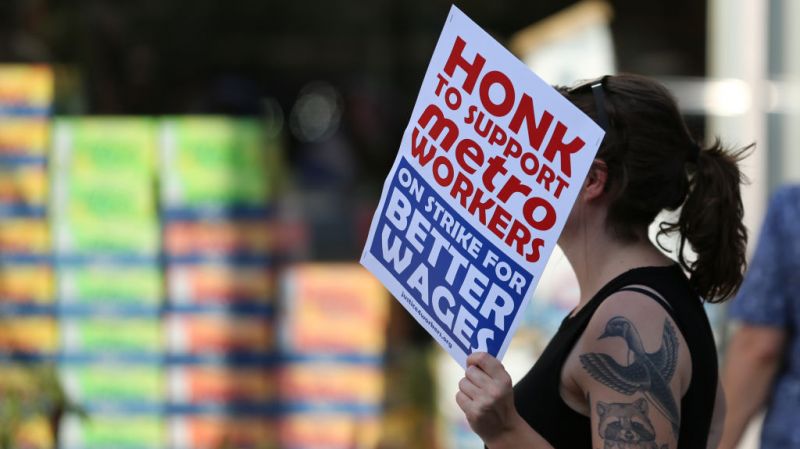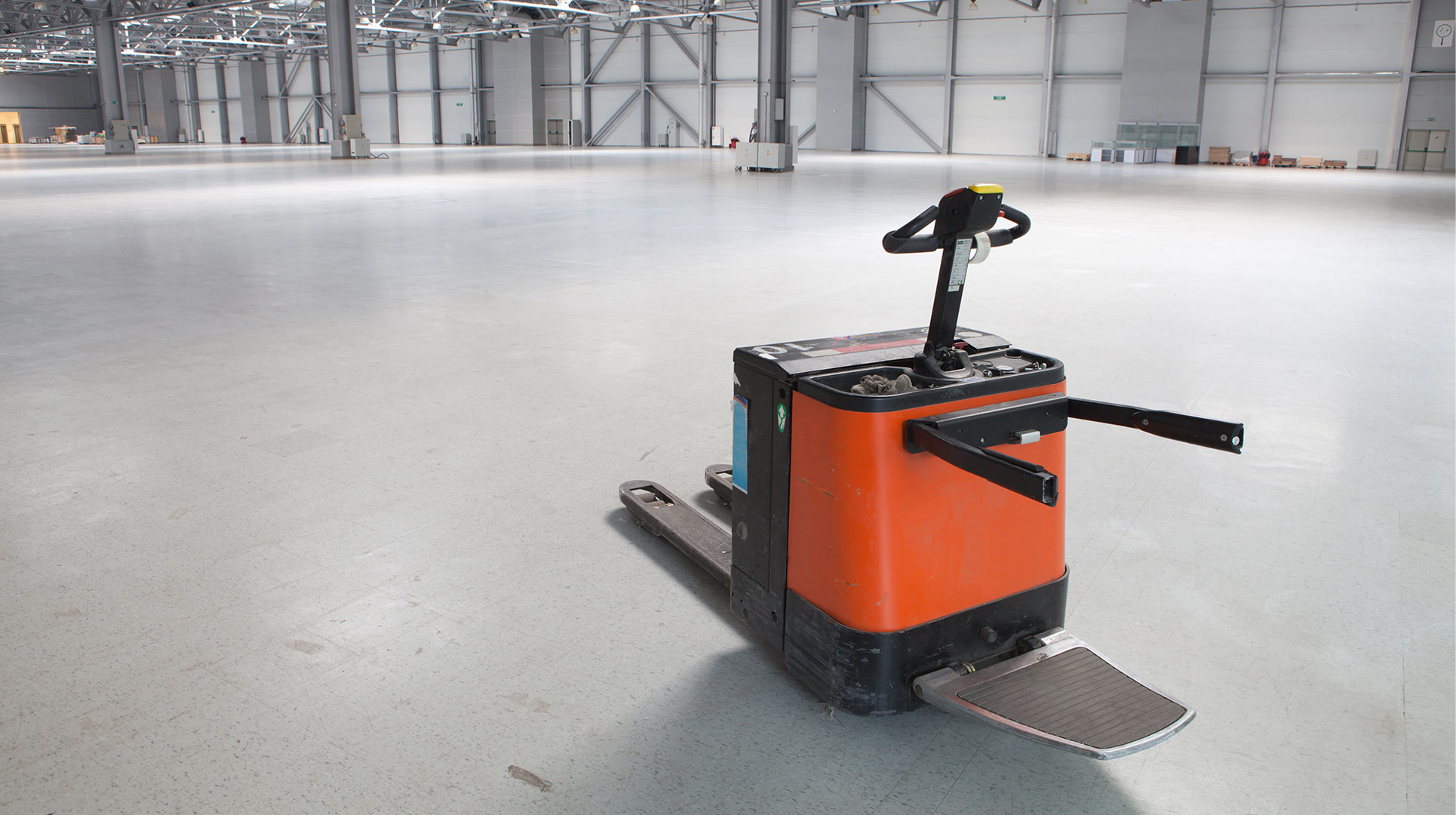What’s With All These Strikes?
After decades of mostly labour peace, Canadian workers seem willing to hit the picket lines. Why? And what happens next?

This season may go down as the “summer of strikes”. At least that’s what some business columnists are calling it. From port workers in B.C. to liquor store employees in Manitoba to grocery store clerks in Toronto, it seems like more workers have walked off the job across the country over the past few months than in recent memory.
The numbers don’t exactly support this perceived groundswell of strikes, however. So far this year, there have been around 120 work stoppages in Canada. That is about on track with the average of 245 work stoppages per year over the past 30 years.
Still, some labour watchers wonder if strike numbers will spike in the coming months as Canadian workers try to keep up with inflation. Between now and the end of this year alone, union contracts representing more than 160,000 public and private sector workers are set to expire, including those for General Motors, Ford and Stellantis (formerly Chrysler).
So, are we headed back to the strike-heavy days of the high-inflation 1970s, when it was typical to see over a thousand work stoppages every year in Canada? Or will a potentially slowing economy put the brakes on walkouts?
Queen’s University associate professor of labour relations Robert Hickey isn’t one for predictions, but he does see similarities between that 1970s era of frequent union-company clashes and today. But he also says there are other factors contributing to the current wave of strikes.
Overall, though, Hickey, who spent most of the 1990s as a union rep and organizer with the Teamsters union in the U.S., doesn’t see any potential increases in strike activity as a sign of problems with labour relations. “Healthy labour relations requires effective and credible strike threats,” he says. “And, in fact, given how extremely low labour conflict has been for the last three decades, the Canadian labour relations environment may need to have a higher level of strike activity to remain vibrant and constructive.”
In conversation with Smith Business Insight contributor Jordan Whitehouse, Hickey explains what may be behind this summer of strikes and what it could mean for the future of employer-employee relations.
Let’s start with a bit of context. What similarities do you see between that contentious 1970s labour environment and today?
There are a couple of things. One is a high-inflation bargaining environment, where you had — and have — heightened expectations of workers wanting to achieve some purchasing power protection. So, if inflation is running at eight or nine per cent, and you’re looking at an annual wage improvement of two per cent, well in two years your wages are effectively cut by 10 per cent in terms of purchasing power.
Take the recent example of the federal public service. When the Public Service Alliance of Canada shared what their bargaining demands were for its federal public service members [seven to 14 per cent wage and non-wage increases per year], everyone thought it was insane. Well, it was actually in the ballpark if you think about inflation.
The other similarity to the ’70s really comes down to tight labour markets and low unemployment. Post-pandemic, we talked a lot about the Great Resignation. And in some ways, that’s the non-union response to job frustration. It was very much in line with that sense of people re-evaluating the value of their jobs. With unionized workers, the union is seen as a voice mechanism to that frustration to say, “I need better pay, better conditions, etcetera.” And so, when you have the tight labour markets and low unemployment rates that we’ve seen, those factors tend to enhance union bargaining power so that the prospect of strike action is a lot more salient. That’s really similar to what we saw in the 1970s; less so in the ’80s once things switched into a recession. Then unemployment rates go up and we see strike incidents go down.
That leads to the big question now. Will there be a soft economic landing and sustained strike action? Or will we see a recession and fewer strikes like in the 1980s?
I’m not going to make a prediction one way or the other, but what we can see is that there does seem to be a softening of job quitting. So perhaps the Great Resignation is over. We do still have unionized workers trying to express their voice through union bargaining and strikes, but is that coming to an end with increases in unemployment? We’re not there yet. Employers are still struggling with recruitment and retention in certain key industries, but that could change as the economy cools.
What’s different between the labour actions of the 1970s and today? Is there anything unique about what is driving some of these current strikes?
I do think there is something to say about the post-pandemic changes in work, in how people think about work. In the 1970s, there was this sense that, well, you may be fighting with the employer but that the employer is invested in the community, that there is a social contract. But with the rise of working from home, the ability to live anywhere and work anywhere, that social contract isn’t as clear, and that creates some fundamental changes. I think one of those changes is how people identify with that sense of organizational commitment or the broader sense of there being a social contract between organizations and employees. This could mean that things are becoming much more transactional where that sense of loyalty or mutual commitment is being eroded — and this could be playing a part in workers’ willingness to strike.

Another unique aspect of a few recent strikes is that some workers have rejected tentative agreements their unions had reached with employers. The initial deals put in front of B.C. port workers and Nova Scotia educational support staff are two examples. Does this indicate anything about the current relationship between workers and their unions? Are unions out of touch with what their members want?
It's a good question, but, you know, being a union leader or being on a union bargaining committee is never an easy job, especially now where you’re dealing with this long history of patterns and settlements that were normalized in a low-inflation environment. And so now, when you enter a new bargaining environment with high inflation, employers may look at union demands as crazy, as the federal government did with PSAC’s initial demands, for instance. On the other side, you have workers wanting to protect their purchasing power. And so, it’s a very delicate balance that union leaders have to try and navigate right now — and sometimes there may be miscalculations.
We’ve talked a lot about unionized environments, but I’m wondering if you think any of these labour actions will have an impact on non-unionized workers and organizations moving forward.
Successful strikes can certainly spur more labour action in general. So, for example, UPS workers in the U.S. recently didn’t go on strike, but they had a really successful campaign that resulted in big wage increases. Maybe that’ll inspire more organizing at Amazon warehouses and amongst the various contracted driving companies. So the most immediate and direct impacts will be on those that have the easiest comparison. It tends to be somewhat limited, though, in terms of labour action creating some unexpected groundswell across the board. I don’t think that will happen.
Same question, but for unionized workers and organizations. What impacts might these strikes have on those environments in the coming months and years?
One big question is whether the disruption of strikes and the benefit increases that unionized workers could see through striking will drive the rise of new non-union competition. That’s always a potential threat. But then again, if unions have been successful, they are likely going to be successful in protecting the market share of those unionized contractors by getting the non-union contractors organized based on the success of their bargaining. Plus, if I’m a company operating non-union, I’m taking note of the bargained outcomes of those unionized competitors so that I can stay non-union.